A Survey on Trajectory Planning and Resource Allocation in Unmanned Aerial Vehicle-assisted Edge Computing Networks
-
摘要: 无人机辅助移动边缘计算(MEC)具有灵活部署、快速响应、广域覆盖、分布计算和可扩展性等优势,在智慧城市、环境监测和应急救援等领域具有广阔应用前景,是提升低空智能网联服务质量的重要研究方向。该文围绕无人机辅助MEC场景的飞行轨迹与资源分配联合优化,从离线优化和在线优化两个维度展开分析:针对离线联合优化,以不同优化性能指标为切入点,从网络场景、性能控制方法和算法设计3个方面梳理研究现状;针对在线联合优化,以优化框架为基础,从网络场景、性能指标和控制方法3个方面梳理研究现状;针对离线与在线混合优化,阐述当前研究成果。最后,聚焦无人机辅助MEC网络与其它网络制式融合时产生的新问题,讨论离线优化环境状态收集、离线优化智能化求解、在线优化多无人机实时协同、在线优化实时信息反馈、无人机能效优化和空-地通信安全保障等关键技术挑战及其未来研究方向。Abstract:
Significance Unmanned Aerial Vehicle-assisted Mobile Edge Computing (UAV-MEC) is recognized for its flexible deployment, rapid response, wide-area coverage, and distributed computing capabilities, demonstrating significant potential in smart cities, environmental monitoring, and emergency rescue. Traditional ground-based MEC systems, constrained by fixed edge server deployments, are inadequate for dynamic user distributions and remote area demands. The integration of UAVs with MEC is a critical advancement, where dynamic trajectory planning and resource allocation enhance network energy efficiency, computational efficiency, and service quality, supporting the development of low-altitude intelligent networking. This integration addresses the efficient offloading and real-time processing of computation-intensive tasks through air-ground collaborative optimization, providing foundational technical support for future 6G networks and low-altitude economies. Existing surveys in this field predominantly focus on the integration of UAVs and MEC from a resource allocation perspective, while trajectory planning and its joint optimization with resource allocation are largely overlooked. Furthermore, the distinctions between online and offline optimization are insufficiently addressed in existing surveys, necessitating a systematic analysis of current theories and methods to guide future research. Progress In UAV-MEC, joint optimization of trajectory planning and resource allocation has progressed in both online and offline domains. Algorithm frameworks, including alternating optimization and reinforcement learning, have been shown to effectively balance computational complexity with optimization performance. (1) Offline optimization: (a) Energy efficiency optimization: Existing studies employ alternating optimization methods, such as Block Coordinate Descent (BCD) and Successive Convex Approximation (SCA), as well as heuristic algorithms, including differential evolution and dynamic programming, to jointly optimize trajectories, task offloading, and resource allocation, minimizing energy consumption for both users and UAVs. Further reductions in system energy consumption are achieved by integrating Wireless Power Transfer (WPT) and Reconfigurable Intelligent Surfaces (RIS). (b) Latency optimization: Non-Orthogonal Multiple Access (NOMA) and task scheduling strategies are utilized to minimize user-perceived latency. A multi-UAV collaborative framework based on game theory and reinforcement learning is proposed. (c) Multi-objective optimization: The Dinkelbach method is introduced to address fractional programming problems, facilitating joint optimization of computational efficiency, throughput, and secure capacity. Digital Twin (DT) technology is integrated to approximate global optimality. (2) Online optimization: (a) Lyapunov framework: Long-term stochastic problems are decoupled into per-slot optimizations through temporal decomposition. Convex optimization is combined with dynamic trajectory and resource allocation adjustments to adapt to time-varying channels and user mobility. (b) Reinforcement learning: Multi-Agent Deep Reinforcement Learning (MADRL) is applied to multi-UAV collaboration, with expert knowledge guidance and noise injection incorporated to accelerate algorithm convergence. (3) Hybrid optimization: A “pre-planning + online adjustment” strategy is proposed. In the offline phase, clustering algorithms and particle swarm optimization are used to generate high-quality samples for training Deep Neural Networks (DNNs). In the online phase, incremental learning is applied to dynamically fine-tune DNNs for unknown scenarios, balancing global planning with real-time responsiveness. Conclusions Despite notable advancements, several critical challenges in UAV-assisted MEC remain unresolved: (1) Incomplete future state information: The formulation of offline optimization problems typically assumes full knowledge of environmental state information over future time horizons. However, in multi-UAV scenarios involving multi-dimensional parameters, acquiring complete and accurate state information across extended periods remains difficult, limiting the applicability of offline methods. (2) Real-time multi-UAV coordination: Enhancing system efficiency and task completion quality requires real-time coordination among UAVs. This process demands extensive information exchange within UAV swarms, complex obstacle avoidance, and high-dimensional control adjustments. Collaborative computation offloading and multi-UAV trajectory planning remain challenging due to their inherent complexity. (3) Security vulnerabilities in air-ground links: The line-of-sight propagation and open transmission environment of UAV-assisted MEC networks expose offloaded data to risks such as eavesdropping, data tampering, and signal interference. Current approaches predominantly rely on physical-layer security, whereas active defense mechanisms against emerging threats, including deep-fake signal attacks, are still underdeveloped. (4) Lack of integration across air-space-ground networks: The absence of standardized interfaces and unified cross-domain resource scheduling protocols hinders the coordination of spectrum, computing, and caching resources between satellites and UAV-MEC systems. This limitation restricts the realization of globally orchestrated heterogeneous networks. (5) Energy constraints and service quality tradeoff: UAV endurance directly affects service coverage and operational sustainability. Although energy efficiency is emphasized in both offline and online optimization strategies, a fundamental tradeoff persists between energy consumption and edge service quality. These technical bottlenecks continue to restrict the transition of UAV-MEC from theoretical frameworks to large-scale real-world deployment. Prospects Future research is expected to progress in the following directions: (1) Intelligent environmental perception will advance through the integration of Gated Recurrent Units (GRUs) or Temporal Convolutional Networks (TCNs) for dynamic parameter prediction, while Generative Adversarial Networks (GANs) will be leveraged to complement incomplete environmental state information. (2) Multi-UAV collaboration and energy efficiency will be enhanced through the development of service migration mechanisms and DT-driven MADRL frameworks, combined with solar/WPT technologies to improve UAV endurance. (3) Secure communication mechanisms will evolve with the combination of beamforming, physical-layer security techniques, and homomorphic encryption-based task offloading protocols to address eavesdropping and data tampering in air-ground channels. (4) Heterogeneous network integration will focus on exploring a “cloud-edge-device-satellite” architecture to expand UAV-MEC coverage and robustness in 6G networks, with the development of satellites-assisted cross-domain resource scheduling algorithms. (5) Green computing paradigms will emerge through the integration of energy harvesting and service migration mechanisms to reduce computing loads, promoting sustainable low-altitude intelligent computing ecosystems. -
表 1 离线联合优化研究现状
性能指标 性能优化控制方法 无人机数量 文献编号 优化算法 用户能耗 计算卸载、无人机轨迹、悬停时间 单无人机 [13,14] 启发式、动态规划、差分进化、
贪婪算法能耗 无人机能耗 无人机轨迹、计算卸载、资源分配
(传输功率、CPU频率等)、用户协同单无人机 [12,15] 启发式、SCA、拉格朗日对偶法、凸优化 用户与无人机加权能耗 无人机轨迹、计算卸载、资源分配、RIS相位偏移、内容缓存、
传输波束赋形、用户分簇单无人机 [16–21] 动态规划、凸优化、CCCP, BCD, Dinkelbach 时延 资源分配、任务调度、无人机轨迹、
计算卸载文献[22,23]为单无人机
文献[24–26]为多无人机[22–26] BCD、差分凸规划、贪心、SCA、惩罚CCCP、启发式、聚类 时延与能耗
加权和资源分配、计算卸载、无人机轨迹 多无人机 [27] 博弈论、注水法、梯度下降 计算效率 资源分配(传输功率、CPU频率等)、
计算卸载、计算调度、无人机轨迹单无人机 [28–31] Dinkelbach, BCD, SCA、凸优化 吞吐量与
信息年龄无人机轨迹、资源分配、计算卸载 文献[32,34]为单无人机
文献[35]为多无人机[32,34,35] 启发式、动态规划、差分进化、
贪婪算法、DDPG, CQL其它 活跃设备的
计算数据量无人机轨迹、资源分配 单无人机 [33] 启发式、SCA、拉格朗日对偶法、凸优化 安全容量 无人机轨迹、资源分配(卸载功率、
噪声发射功率)、计算卸载单无人机 [36,37] 动态规划、CCCP, BCD, Dinkelbach 表 2 在线优化研究现状
优化框架 性能优化控制方法 性能指标 无人机数量 文献 Lyapunov优化 无人机轨迹、任务卸载、
资源分配、能量收集用户体验质量、能耗、
吞吐量、时延文献[42,44]为多无人机,
其余为单无人机[38–45] 强化学习优化 价值学习 无人机轨迹、资源分配、
任务卸载、信息年龄、用户调度安全容量、能耗、时延、
卸载任务量文献[46–49]为单无人机,
其余为多无人机[46–51] 强化学习优化 策略学习 无人机轨迹、资源分配、
任务卸载、用户-无人机关联、
无人机飞行时间能耗、时延、公平性、
处理成功率、能效文献[53–55,58,63,65]为多无人机,
其余为单无人机[52–65] 混合时间尺度机制 无人机轨迹、资源分配、
任务卸载、内容缓存时延、能耗、更新年龄 多无人机 [66–68] 在线拍卖框架 无人机轨迹、用户-无人机关联、支付代价 社会成本 多无人机 [69] -
[1] 董超, 经宇骞, 屈毓锛, 等. 面向低空智联网频谱认知与决策的云边端融合体系架构[J]. 通信学报, 2023, 44(11): 1–12. doi: 10.11959/j.issn.1000-436x.2023228.DONG Chao, JING Yuqian, QU Yuben, et al. Cloud-edge-device fusion architecture oriented to spectrum cognition and decision in low altitude intelligence network[J]. Journal on Communications, 2023, 44(11): 1–12. doi: 10.11959/j.issn.1000-436x.2023228. [2] SATYANARAYANAN M, BAHL P, CÁCERES R, et al. The case for VM-based cloudlets in mobile computing[J]. IEEE Pervasive Computing, 2009, 8(4): 14–23. doi: 10.1109/MPRV.2009.82. [3] AL-HOURANI A, KANDEEPAN S, and LARDNER S. Optimal LAP altitude for maximum coverage[J]. IEEE Wireless Communications Letters, 2014, 3(6): 569–572. doi: 10.1109/LWC.2014.2342736. [4] BELLINGHAM J, TILLERSON M, RICHARDS A, et al. Multi-task allocation and path planning for cooperating UAVs[M]. BUTENKO S, MURPHEY R, and PARDALOS P M. Cooperative Control: Models, Applications and Algorithms. Boston: Springer, 2003: 23–42. doi: 10.1007/978-1-4757-3758-5_2. [5] MELLINGER D and KUMAR V. Minimum snap trajectory generation and control for quadrotors[C]. 2011 IEEE International Conference on Robotics and Automation, Shanghai, China, 2011: 2520–2525. doi: 10.1109/ICRA.2011.5980409. [6] CUERVO E, BALASUBRAMANIAN A, CHO D K, et al. MAUI: Making smartphones last longer with code offload[C]. The 8th International Conference on Mobile Systems, Applications, and Services, San Francisco, USA, 2010: 49–62. doi: 10.1145/1814433.1814441. [7] MAO Yuyi, YOU Changsheng, ZHANG Jun, et al. A survey on mobile edge computing: The communication perspective[J]. IEEE Communications Surveys & Tutorials, 2017, 19(4): 2322–2358. doi: 10.1109/COMST.2017.2745201. [8] BAI Yu, ZHAO Hui, ZHANG Xin, et al. Toward autonomous multi-UAV wireless network: A survey of reinforcement learning-based approaches[J]. IEEE Communications Surveys & Tutorials, 2023, 25(4): 3038–3067. doi: 10.1109/COMST.2023.3323344. [9] 董超, 沈赟, 屈毓锛. 基于无人机的边缘智能计算研究综述[J]. 智能科学与技术学报, 2020, 2(3): 227–239. doi: 10.11959/j.issn.2096-6652.202025.DONG Chao, SHEN Yun, and QU Yuben. A survey of UAV-based edge intelligent computing[J]. Chinese Journal of Intelligent Science and Technology, 2020, 2(3): 227–239. doi: 10.11959/j.issn.2096-6652.202025. [10] 何茂霖, 多滨, 胡艳梅, 等. 基于智能超表面的无人机移动边缘计算综述[J]. 无线电通信技术, 2024, 50(2): 349–356. doi: 10.3969/j.issn.1003-3114.2024.02.016.HE Maolin, DUO Bin, HU Yanmei, et al. Survey on UAV-enabled mobile edge computing based on reconfigurable Intelligent surface[J]. Radio Communications Technology, 2024, 50(2): 349–356. doi: 10.3969/j.issn.1003-3114.2024.02.016. [11] ZENG Yong and ZHANG Rui. Energy-efficient UAV communication with trajectory optimization[J]. IEEE Transactions on Wireless Communications, 2017, 16(6): 3747–3760. doi: 10.1109/TWC.2017.2688328. [12] LIU Yuan, XIONG Ke, NI Qiang, et al. UAV-assisted wireless powered cooperative mobile edge computing: Joint offloading, CPU control, and trajectory optimization[J]. IEEE Internet of Things Journal, 2020, 7(4): 2777–2790. doi: 10.1109/JIOT.2019.2958975. [13] LU C H, SHEU J P, and HSIEH C Y. An energy optimization algorithm for UAV-assisted satellite mobile edge computing system[C]. 2024 IEEE Wireless Communications and Networking Conference, Dubai, United Arab Emirates, 2024: 1–6. doi: 10.1109/WCNC57260.2024.10571080. [14] EL-EMARY M, RANJHA A, NABOULSI D, et al. Energy-efficient task offloading and trajectory design for UAV-based MEC systems[C]. The 19th International Conference on Wireless and Mobile Computing, Networking and Communications, Montreal, Canada, 2023: 274–279. doi: 10.1109/WiMob58348.2023.10187721. [15] WANG Di, TIAN Jie, ZHANG Haixia, et al. Task offloading and trajectory scheduling for UAV-enabled MEC networks: An optimal transport theory perspective[J]. IEEE Wireless Communications Letters, 2022, 11(1): 150–154. doi: 10.1109/LWC.2021.3122957. [16] FAN Lingyan, YAN Wu, CHEN Xihan, et al. An energy efficient design for UAV communication with mobile edge computing[J]. China Communications, 2019, 16(1): 26–36. doi: 10.12676/j.cc.2019.01.003. [17] XU Bin, KUANG Zhufang, GAO Jie, et al. Joint offloading decision and trajectory design for UAV-enabled edge computing with task dependency[J]. IEEE Transactions on Wireless Communications, 2023, 22(8): 5043–5055. doi: 10.1109/TWC.2022.3231408. [18] 江雪, 赵亮. 无人机辅助移动边缘计算网络中轨迹设计和带宽分配策略[J]. 物联网学报, 2023, 7(4): 123–131. doi: 10.11959/j.issn.2096-3750.2023.00329.JIANG Xue and ZHAO Liang. Trajectory design and bandwidth allocation strategy in UAV-assisted MEC network[J]. Chinese Journal on Internet of Things, 2023, 7(4): 123–131. doi: 10.11959/j.issn.2096-3750.2023.00329. [19] MEI Haibo, YANG Kun, SHEN Jun, et al. Joint trajectory-task-cache optimization with phase-shift design of RIS-assisted UAV for MEC[J]. IEEE Wireless Communications Letters, 2021, 10(7): 1586–1590. doi: 10.1109/LWC.2021.3074990. [20] LIU Boyang, WAN Yiyao, ZHOU Fuhui, et al. Resource allocation and trajectory design for MISO UAV-assisted MEC networks[J]. IEEE Transactions on Vehicular Technology, 2022, 71(5): 4933–4948. doi: 10.1109/TVT.2022.3140833. [21] 季薇, 杨许鑫, 李飞, 等. 无人机辅助MEC系统中基于最优SIC顺序的能耗优化方案[J]. 通信学报, 2024, 45(2): 18–30. doi: 10.11959/j.issn.1000-436x.2024042.JI Wei, YANG Xuxin, LI Fei, et al. Energy consumption optimization scheme in UAV-assisted MEC system based on optimal SIC order[J]. Journal on Communications, 2024, 45(2): 18–30. doi: 10.11959/j.issn.1000-436x.2024042. [22] GUO Fengxian, ZHANG Heli, JI Hong, et al. Joint trajectory and computation offloading optimization for UAV-assisted MEC with NOMA[C]. The IEEE Conference on Computer Communications Workshops, Paris, France, 2019: 1–6. doi: 10.1109/INFOCOMWKSHPS47286.2019.9093764. [23] ZHANG Xin, CHENG Zheng, ZHANG Guopeng, et al. Trajectory optimization and resource allocation for time minimization in the UAV-enabled MEC system[C]. 2022 IEEE Wireless Communications and Networking Conference, Austin, USA, 2022: 333–338. doi: 10.1109/WCNC51071.2022.9771719. [24] 嵇介曲, 朱琨, 易畅言, 等. 多无人机辅助移动边缘计算中的任务卸载和轨迹优化[J]. 物联网学报, 2021, 5(1): 27–35. doi: 10.11959/j.issn.2096-3750.2021.00190.JI Jiequ, ZHU Kun, YI Changyan, et al. Joint task offloading and trajectory optimization for multi-UAV assisted mobile edge computing[J]. Chinese Journal on Internet of Things, 2021, 5(1): 27–35. doi: 10.11959/j.issn.2096-3750.2021.00190. [25] 邹昳琨, 王钢, 王金龙, 等. 基于MIMO的多无人机辅助移动边缘计算系统时延优化设计[J]. 电子与信息学报, 2022, 44(3): 881–889. doi: 10.11999/JEIT211360.ZOU Yikun, WANG Gang, WANG Jinlong, et al. Delay optimization design for multi-UAVs mobile edge computing systems based on MIMO[J]. Journal of Electronics & Information Technology, 2022, 44(3): 881–889. doi: 10.11999/JEIT211360. [26] 贾哲松, 王高才. 无线网络中具有MEC的多UAV飞行轨迹优化[J]. 计算机工程与设计, 2023, 44(10): 2916–2925. doi: 10.16208/j.issn1000-7024.2023.10.006.JIA Zhesong and WANG Gaocai. Flight trajectory optimization of multi-UAV with MEC in wireless network[J]. Computer Engineering and Design, 2023, 44(10): 2916–2925. doi: 10.16208/j.issn1000-7024.2023.10.006. [27] PERVEZ F, SULTANA A, YANG Cungang, et al. Energy and latency efficient joint communication and computation optimization in a multi-UAV-assisted MEC network[J]. IEEE Transactions on Wireless Communications, 2024, 23(3): 1728–1741. doi: 10.1109/TWC.2023.3291692. [28] HU Zhenzhen, ZENG Fanzi, XIAO Zhu, et al. Computation efficiency maximization and QoE-provisioning in UAV-enabled MEC communication systems[J]. IEEE Transactions on Network Science and Engineering, 2021, 8(2): 1630–1645. doi: 10.1109/TNSE.2021.3068123. [29] WANG Longjie, ZHOU Qi, and SHEN Yan. Computation efficiency maximization for UAV-assisted relaying and MEC networks in urban environment[J]. IEEE Transactions on Green Communications and Networking, 2023, 7(2): 565–578. doi: 10.1109/TGCN.2022.3222398. [30] QIN Xintong, SONG Zhengyu, HOU Tianwei, et al. Joint optimization of resource allocation, phase shift, and UAV trajectory for energy-efficient RIS-assisted UAV-enabled MEC systems[J]. IEEE Transactions on Green Communications and Networking, 2023, 7(4): 1778–1792. doi: 10.1109/TGCN.2023.3287604. [31] 吴启晖, 吴伟. 无人机辅助边缘计算的能量效率最大化算法设计[J]. 通信学报, 2020, 41(10): 15–24. doi: 10.11959/j.issn.1000-436x.2020204.WU Qihui and WU Wei. Algorithm design on energy efficiency maximization for UAV-assisted edge computing[J]. Journal on Communications, 2020, 41(10): 15–24. doi: 10.11959/j.issn.1000-436x.2020204. [32] XU Changyuan, ZHAN Cheng, LIAO Jingrui, et al. Computation throughput maximization for UAV-enabled MEC with binary computation offloading[C]. The IEEE International Conference on Communications, Seoul, Republic of Korea, 2022: 4348–4353. doi: 10.1109/ICC45855.2022.9838879. [33] LIU Wenchao, WANG Hao, ZHANG Xuhui, et al. Joint trajectory design and resource allocation in UAV-enabled heterogeneous MEC systems[J]. IEEE Internet of Things Journal, 2024, 11(19): 30817–30832. doi: 10.1109/JIOT.2024.3418568. [34] FENG Wanmei, TANG Jie, ZHAO Nan, et al. A deep learning-based approach to resource allocation in UAV-aided wireless powered MEC networks[C]. The IEEE International Conference on Communications, Montreal, Canada, 2021: 1–6. doi: 10.1109/ICC42927.2021.9500582. [35] ELDEEB E and ALVES H. Multi-agent meta-offline reinforcement learning for timely UAV path planning and data collection[EB/OL]. http://arxiv.org/abs/2501.16098, 2025. [36] GAO Yuan, GUO Yang, WANG Ping, et al. Secure enhancement in NOMA-based UAV-MEC networks[C]. The IEEE Conference on Computer Communications Workshops, New York, USA, 2022: 1–6. doi: 10.1109/INFOCOMWKSHPS54753.2022.9798116. [37] CHEN Peipei, LUO Xueshan, GUO Deke, et al. Secure task offloading for MEC-aided-UAV system[J]. IEEE Transactions on Intelligent Vehicles, 2023, 8(5): 3444–3457. doi: 10.1109/TIV.2022.3227367. [38] HE Long, SUN Geng, SUN Zemin, et al. An online joint optimization approach for QoE maximization in UAV-enabled mobile edge computing[C]. The IEEE Conference on Computer Communications, Vancouver, Canada, 2024: 101–110. doi: 10.1109/INFOCOM52122.2024.10621306. [39] YANG Zheyuan, BI Suzhi, and ZHANG Y J A. Dynamic offloading and trajectory control for UAV-enabled mobile edge computing system with energy harvesting devices[J]. IEEE Transactions on Wireless Communications, 2022, 21(12): 10515–10528. doi: 10.1109/TWC.2022.3184953. [40] YANG Zheyuan, BI Suzhi, and ZHANG Y J A. Dynamic trajectory and offloading control of UAV-enabled MEC under user mobility[C]. 2021 IEEE International Conference on Communications Workshops, Montreal, Canada, 2021: 1–6. doi: 10.1109/ICCWorkshops50388.2021.9473504. [41] YANG Zheyuan, BI Suzhi, and ZHANG Y J A. Online trajectory and resource optimization for stochastic UAV-enabled MEC systems[J]. IEEE Transactions on Wireless Communications, 2022, 21(7): 5629–5643. doi: 10.1109/TWC.2022.3142365. [42] LIU Binghong and PENG Mugen. Online offloading for energy-efficient and delay-aware MEC systems with cellular-connected UAVs[J]. IEEE Internet of Things Journal, 2024, 11(12): 22321–22336. doi: 10.1109/JIOT.2024.3381668. [43] ZENG Yaoping, CHEN Shisen, LI Jinding, et al. Online optimization in UAV-enabled MEC system: Minimizing long-term energy consumption under adapting to heterogeneous demands[J]. IEEE Internet of Things Journal, 2024, 11(19): 32143–32159. doi: 10.1109/JIOT.2024.3426312. [44] 曾耀平, 夏玉婷, 江伟伟, 等. 加权能耗最小化的无人机辅助移动边缘计算策略研究[J]. 计算机工程, 2024, 50(2): 288–297. doi: 10.19678/j.issn.1000-3428.0067913.ZENG Yaoping, XIA Yuting, JIANG Weiwei, et al. Research on UAV-assisted mobile edge computing strategy with weighted energy minimization[J]. Computer Engineering, 2024, 50(2): 288–297. doi: 10.19678/j.issn.1000-3428.0067913. [45] LU Yadong, ZHOU Huan, WANG Hengtao, et al. Online trajectory optimization and resource allocation in UAV-assisted NOMA-MEC systems[C]. The IEEE/ACM 32nd International Symposium on Quality of Service, Guangzhou, China, 2024: 1–2. doi: 10.1109/IWQoS61813.2024.10682901. [46] DING Yu, HAN Huimei, LU Weidang, et al. DDQN-based trajectory and resource optimization for UAV-aided MEC secure communications[J]. IEEE Transactions on Vehicular Technology, 2024, 73(4): 6006–6011. doi: 10.1109/TVT.2023.3335210. [47] GAO Yuan, DING Yu, WANG Ye, et al. Deep reinforcement learning-based trajectory optimization and resource allocation for secure UAV-enabled MEC networks[C]. The IEEE Conference on Computer Communications Workshops, Vancouver, Canada, 2024: 1–5. doi: 10.1109/INFOCOMWKSHPS61880.2024.10620895. [48] LIU Chuanjie, ZHONG Yalin, WU Ruolin, et al. Deep reinforcement learning based 3D-trajectory design and task offloading in UAV-enabled MEC system[J]. IEEE Transactions on Vehicular Technology, 2025, 74(2): 3185–3195. doi: 10.1109/TVT.2024.3469977. [49] GAO Yunfei, YUAN Xiaopeng, YANG Dingcheng, et al. UAV-assisted MEC system with mobile ground terminals: DRL-based joint terminal scheduling and UAV 3D trajectory design[J]. IEEE Transactions on Vehicular Technology, 2024, 73(7): 10164–10180. doi: 10.1109/TVT.2024.3367624. [50] CHEN Hao, QIN Xiaoqi, LI Yixuan, et al. Energy-aware path planning for obtaining fresh updates in UAV-IoT MEC systems[C]. 2022 IEEE Wireless Communications and Networking Conference, Austin, USA, 2022: 1791–1796. doi: 10.1109/WCNC51071.2022.9771867. [51] DU Xinyang, LI Xuanheng, ZHAO Nan, et al. A joint trajectory and computation offloading scheme for UAV-MEC networks via multi-agent deep reinforcement learning[C]. The IEEE International Conference on Communications, Rome, Italy, 2023: 5438–5443. doi: 10.1109/ICC45041.2023.10278822. [52] GAN Youhui and HE Yejun. Trajectory optimization and computing offloading strategy in UAV-assisted MEC system[C]. The 2021 Computing, Communications and IoT Applications, Shenzhen, China, 2021: 132–137. doi: 10.1109/ComComAp53641.2021.9652887. [53] HE Yejun, XIANG Kun, CAO Xiaowen, et al. Task scheduling and trajectory optimization based on fairness and communication security for multi-UAV-MEC system[J]. IEEE Internet of Things Journal, 2024, 11(19): 30510–30523. doi: 10.1109/JIOT.2024.3412825. [54] HE Yejun, GAN Youhui, CUI Haixia, et al. Fairness-based 3-D multi-UAV trajectory optimization in multi-UAV-assisted MEC system[J]. IEEE Internet of Things Journal, 2023, 10(13): 11383–11395. doi: 10.1109/JIOT.2023.3241087. [55] 王心一, 陈志江, 雷磊, 等. 多无人机网络边缘智能计算卸载算法[J]. 数据采集与处理, 2023, 38(6): 1286–1298. doi: 10.16337/j.1004-9037.2023.06.005.WANG Xinyi, CHEN Zhijiang, LEI Lei, et al. Computation offloading algorithm for multi-UAV network based on edge intelligence[J]. Journal of Data Acquisition and Processing, 2023, 38(6): 1286–1298. doi: 10.16337/j.1004-9037.2023.06.005. [56] 李校林, 江雨桑. 无人机辅助移动边缘计算中的任务卸载算法[J]. 计算机应用, 2023, 43(6): 1893–1899. doi: 10.11772/j.issn.1001-9081.2022040548.LI Xiaolin and JIANG Yusang. Task offloading algorithm for UAV-assisted mobile edge computing[J]. Journal of Computer Applications, 2023, 43(6): 1893–1899. doi: 10.11772/j.issn.1001-9081.2022040548. [57] QIAN Liping, ZHANG Hongsen, WANG Qian, et al. Joint multi-domain resource allocation and trajectory optimization in UAV-assisted maritime IoT networks[J]. IEEE Internet of Things Journal, 2023, 10(1): 539–552. doi: 10.1109/JIOT.2022.3201017. [58] LI Xulong, QIN Yunhui, HUO Jiahao, et al. Computation offloading and trajectory planning of multi-UAV-enabled MEC: A knowledge-assisted multiagent reinforcement learning approach[J]. IEEE Transactions on Vehicular Technology, 2024, 73(5): 7077–7088. doi: 10.1109/TVT.2023.3338612. [59] ZHOU Xiaoyi, HUANG Liang, YE Tong, et al. Computation bits maximization in UAV-assisted MEC networks with fairness constraint[J]. IEEE Internet of Things Journal, 2022, 9(21): 20997–21009. doi: 10.1109/JIOT.2022.3177658. [60] 张广驰, 何梓楠, 崔苗. 基于深度强化学习的无人机辅助移动边缘计算系统能耗优化[J]. 电子与信息学报, 2023, 45(5): 1635–1643. doi: 10.11999/JEIT220352.ZHANG Guangchi, HE Zinan, and CUI Miao. Energy consumption optimization of unmanned aerial vehicle assisted mobile edge computing systems based on deep reinforcement learning[J]. Journal of Electronics & Information Technology, 2023, 45(5): 1635–1643. doi: 10.11999/JEIT220352. [61] LI Kai, NI Wei, YUAN Xin, et al. Exploring graph neural networks for joint cruise control and task offloading in UAV-enabled mobile edge computing[C]. The IEEE 97th Vehicular Technology Conference, Florence, Italy, 2023: 20–23. doi: 10.1109/VTC2023-Spring57618.2023.10200966. [62] XIANG Kun and HE Yejun. UAV-assisted MEC system considering UAV trajectory and task offloading strategy[C]. The IEEE International Conference on Communications, Rome, Italy, 2023: 4677–4682. doi: 10.1109/ICC45041.2023.10279045. [63] LEE W and KIM T. Multiagent reinforcement learning in controlling offloading ratio and trajectory for multi-UAV mobile-edge computing[J]. IEEE Internet of Things Journal, 2024, 11(2): 3417–3429. doi: 10.1109/JIOT.2023.3296774. [64] LIN Na, TANG Hailun, ZHAO Liang, et al. A PDDQNLP algorithm for energy efficient computation offloading in UAV-assisted MEC[J]. IEEE Transactions on Wireless Communications, 2023, 22(12): 8876–8890. doi: 10.1109/TWC.2023.3266497. [65] CHEN Jingxuan, CAO Xianbin, YANG Peng, et al. Deep reinforcement learning based resource allocation in multi-UAV-aided MEC networks[J]. IEEE Transactions on Communications, 2023, 71(1): 296–309. doi: 10.1109/TCOMM.2022.3226193. [66] WU Jiaqi, LUO Jingjing, WANG Tong, et al. Joint optimization of flying trajectory and task offloading for UAV-enabled MEC networks: A digital twin-assisted hybrid learning approach[C]. The IEEE 99th Vehicular Technology Conference, Singapore, 2024: 1–6. doi: 10.1109/VTC2024-Spring62846.2024.10683004. [67] ZENG Yaoping, CHEN Shisen, CUI Yanpeng, et al. Joint resource allocation and trajectory optimization in UAV-enabled wirelessly powered MEC for large area[J]. IEEE Internet of Things Journal, 2023, 10(17): 15705–15722. doi: 10.1109/JIOT.2023.3265507. [68] REN Xueqi, CHEN Xin, JIAO Libo, et al. Joint optimization of trajectory, caching and task offloading for multi-tier UAV MEC networks[C]. 2024 IEEE Wireless Communications and Networking Conference, Dubai, United Arab Emirates, 2024: 1–6. doi: 10.1109/WCNC57260.2024.10570765. [69] ZHANG Renli, ZHOU Ruiting, WANG Yufeng, et al. Incentive mechanisms for online task offloading with privacy-preserving in UAV-assisted mobile edge computing[J]. IEEE/ACM Transactions on Networking, 2024, 32(3): 2646–2661. doi: 10.1109/TNET.2024.3364141. [70] JIANG Feibo, WANG Kezhi, DONG Li, et al. Deep-learning-based joint resource scheduling algorithms for hybrid MEC networks[J]. IEEE Internet of Things Journal, 2020, 7(7): 6252–6265. doi: 10.1109/JIOT.2019.2954503. [71] JIANG Feibo, WANG Kezhi, DONG Li, et al. AI driven heterogeneous MEC system with UAV assistance for dynamic environment: Challenges and solutions[J]. IEEE Network, 2021, 35(1): 400–408. doi: 10.1109/MNET.011.2000440. [72] FU C W, KU Menglin, CHEN Yujia, et al. UAV trajectory, user association, and power control for multi-UAV-enabled energy-harvesting communications: Offline design and online reinforcement learning[J]. IEEE Internet of Things Journal, 2024, 11(6): 9781–9800. doi: 10.1109/JIOT.2023.3325841. [73] CHANG Hengtai, WANG Chengxiang, FENG Rui, et al. Beam domain channel modeling and prediction for UAV communications[J]. IEEE Transactions on Wireless Communications, 2025, 24(2): 969–983. doi: 10.1109/TWC.2024.3503369. [74] YANG Chengrun, WANG Xuezhi, LU Yifeng, et al. Large language models as optimizers[C]. The 12h International Conference on Learning Representations, Vienna, Austria, 2024. [75] MA Anhua, PAN Su, and ZHOU Weiwei. Service migration algorithm based on Markov decision process with multiple service types and multiple system factors[J]. Chinese Journal of Electronics, 2024, 33(6): 1515–1525. doi: 10.23919/cje.2022.00.128. [76] WANG Yuntao, SU Zhou, GUO Shaolong, et al. A Survey on digital twins: Architecture, enabling technologies, security and privacy, and future prospects[J]. IEEE Internet of Things Journal, 2023, 10(17): 14965–14987. doi: 10.1109/JIOT.2023.3263909. [77] DU Yanxi, ZHANG Ke, LU Yunlong, et al. Edge computing-assisted joint offloading and migration in parking lots scenarios[C]. 2024 IEEE/CIC International Conference on Communications in China, Hangzhou, China, 2024: 1021–1026. doi: 10.1109/ICCC62479.2024.10681806. [78] ZHANG Jifa, LU Weidang, XING Chengwen, et al. Intelligent integrated sensing and communication: A survey[J]. Science China Information Sciences, 2025, 68(3): 131301. doi: 10.1007/s11432-024-4205-8. -





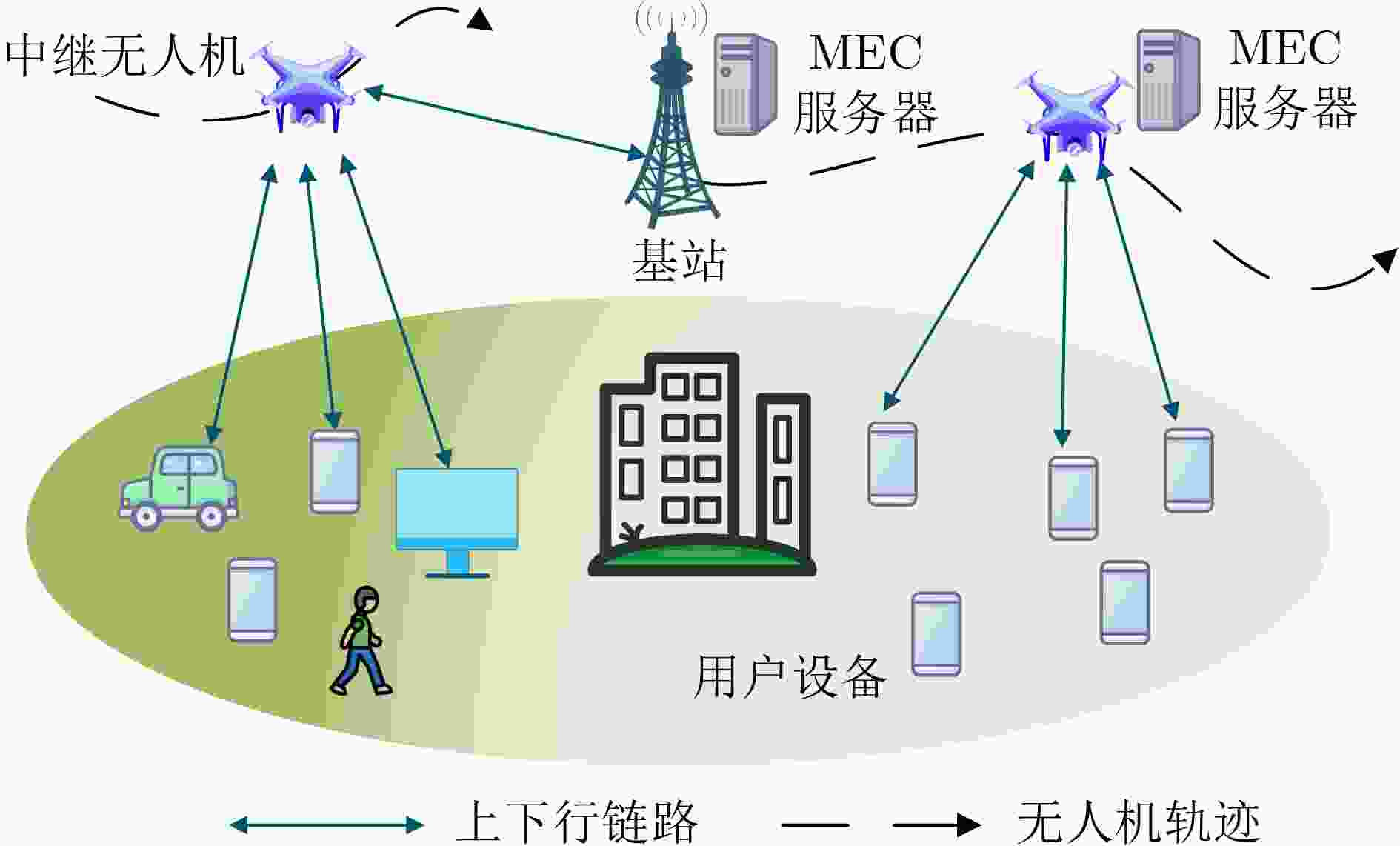
 下载:
下载:

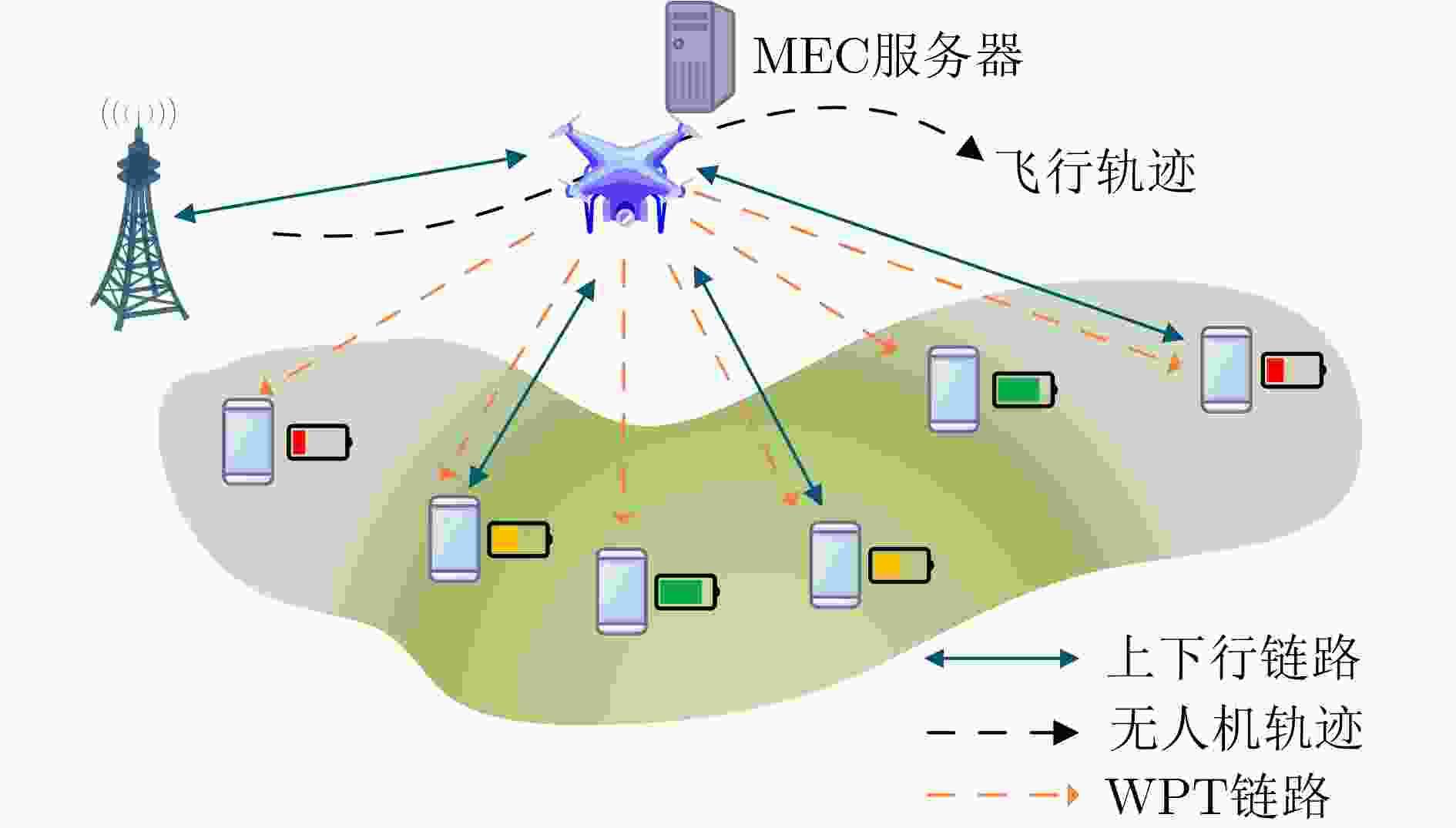
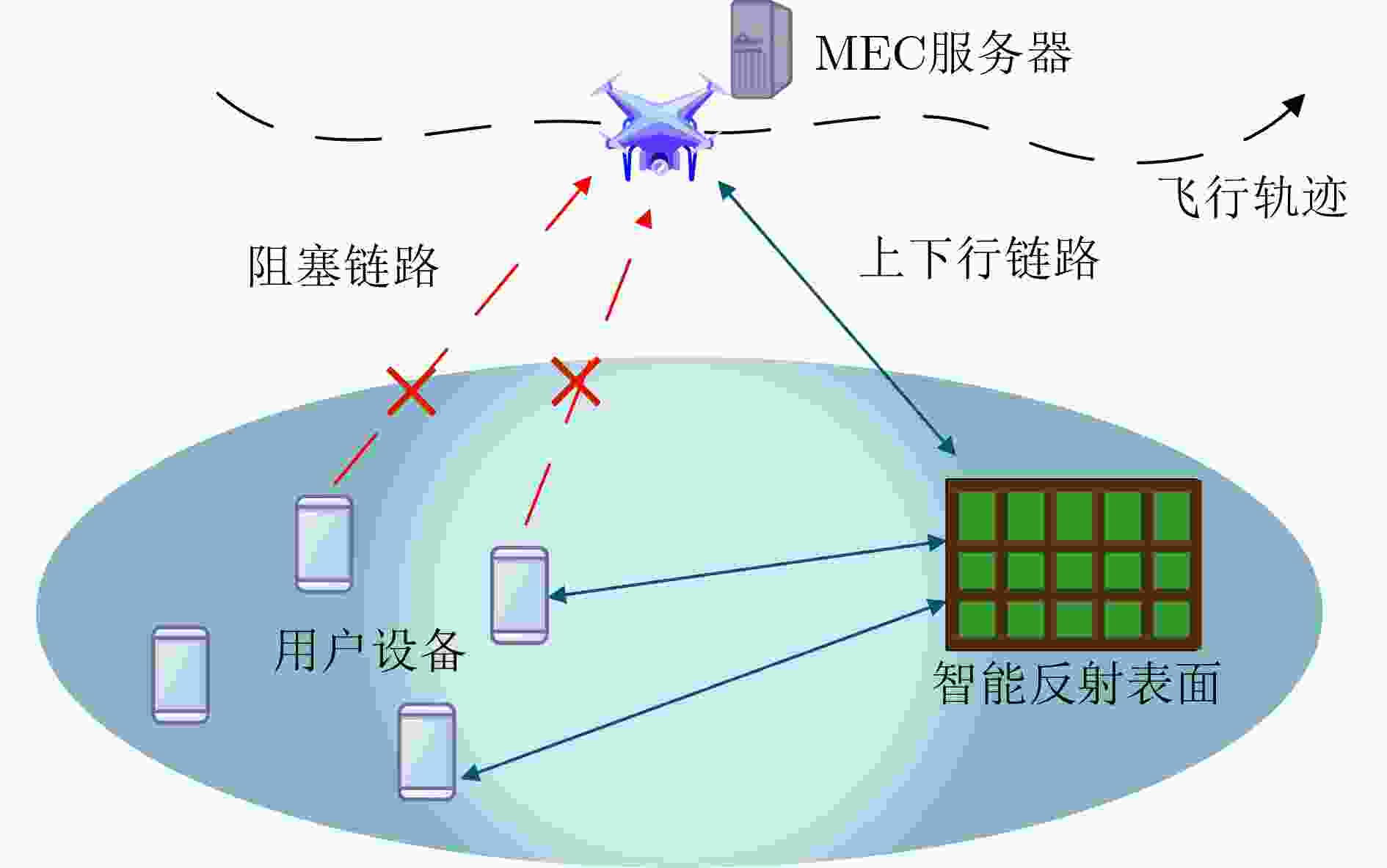
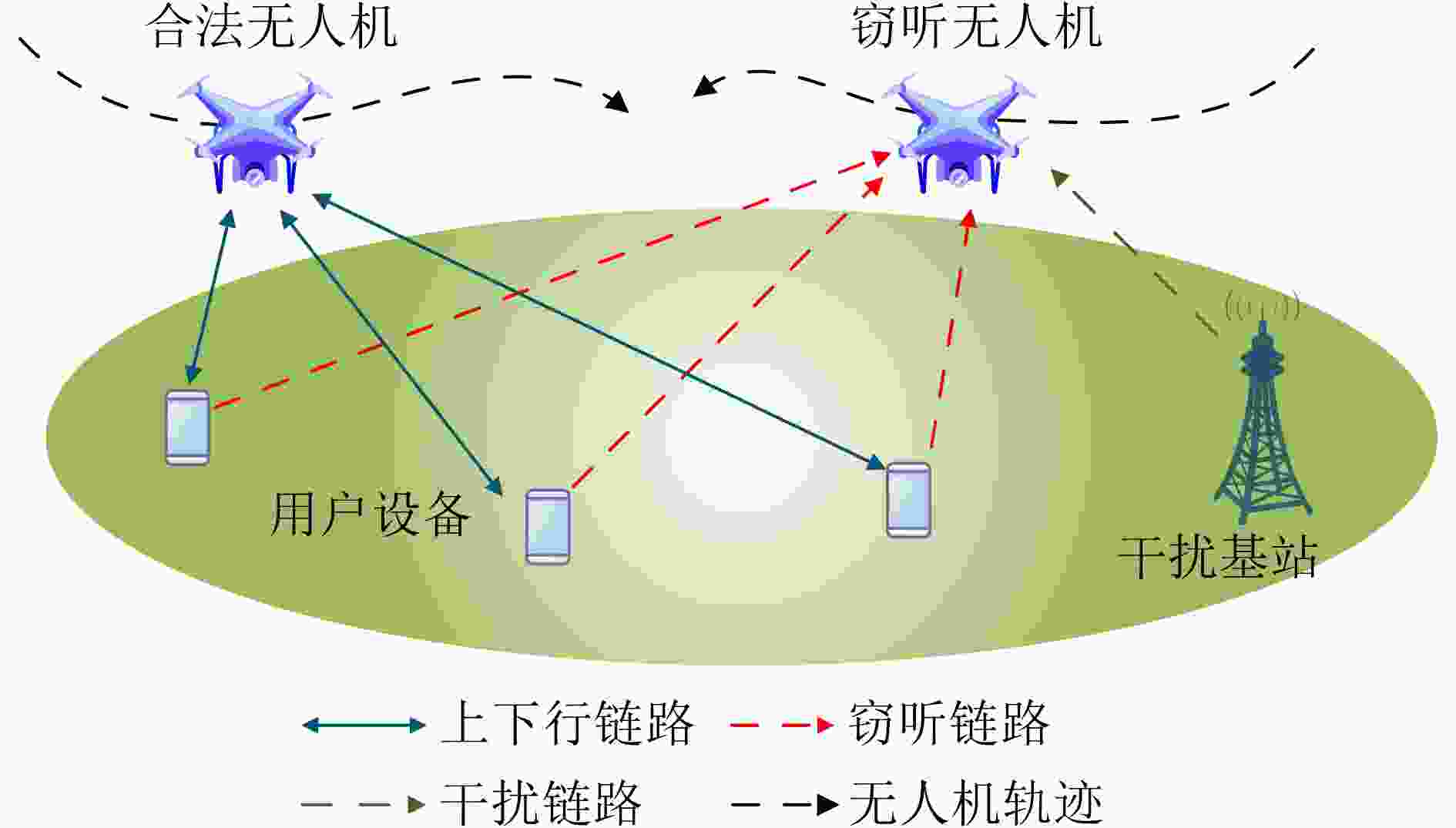
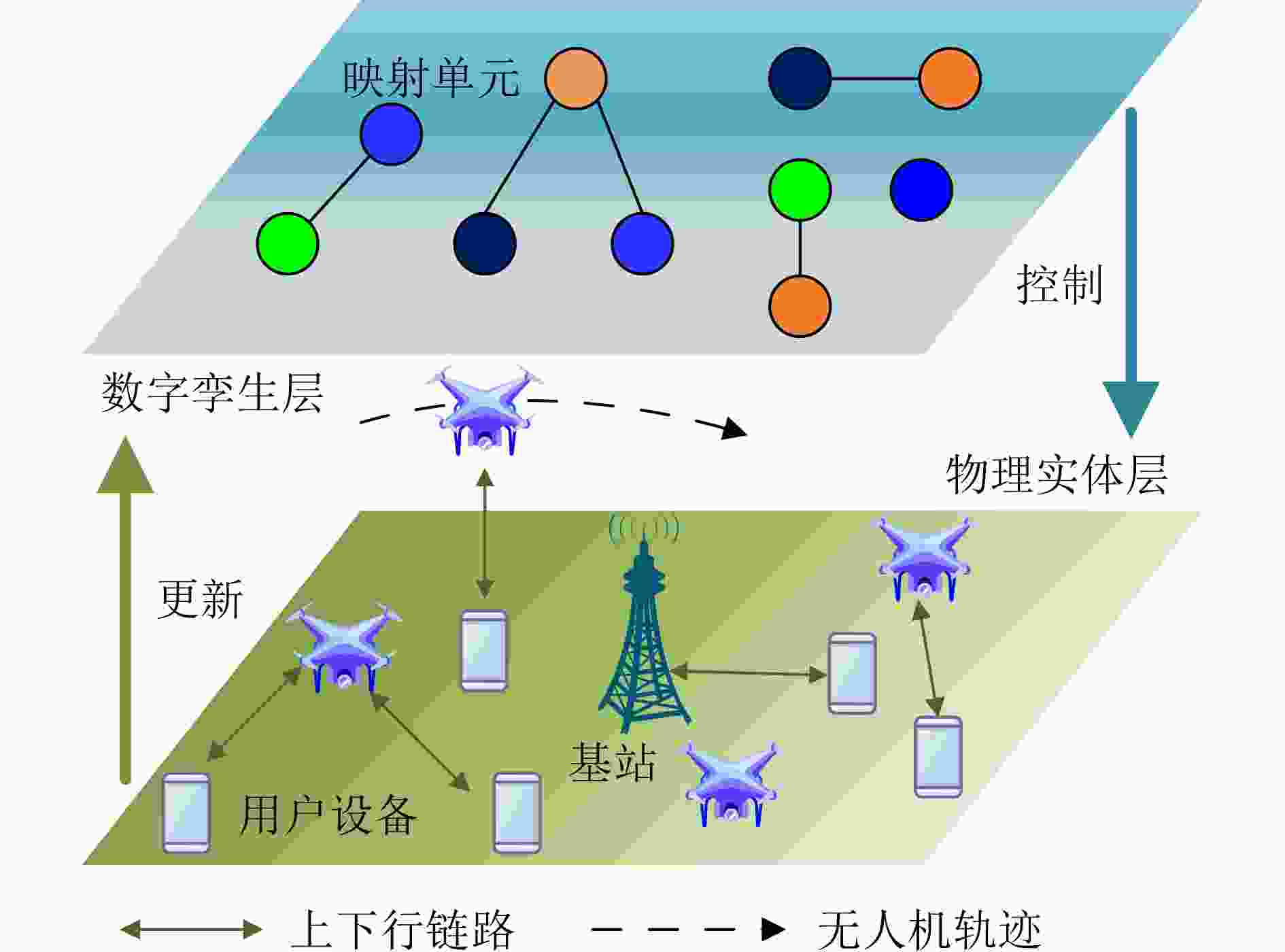
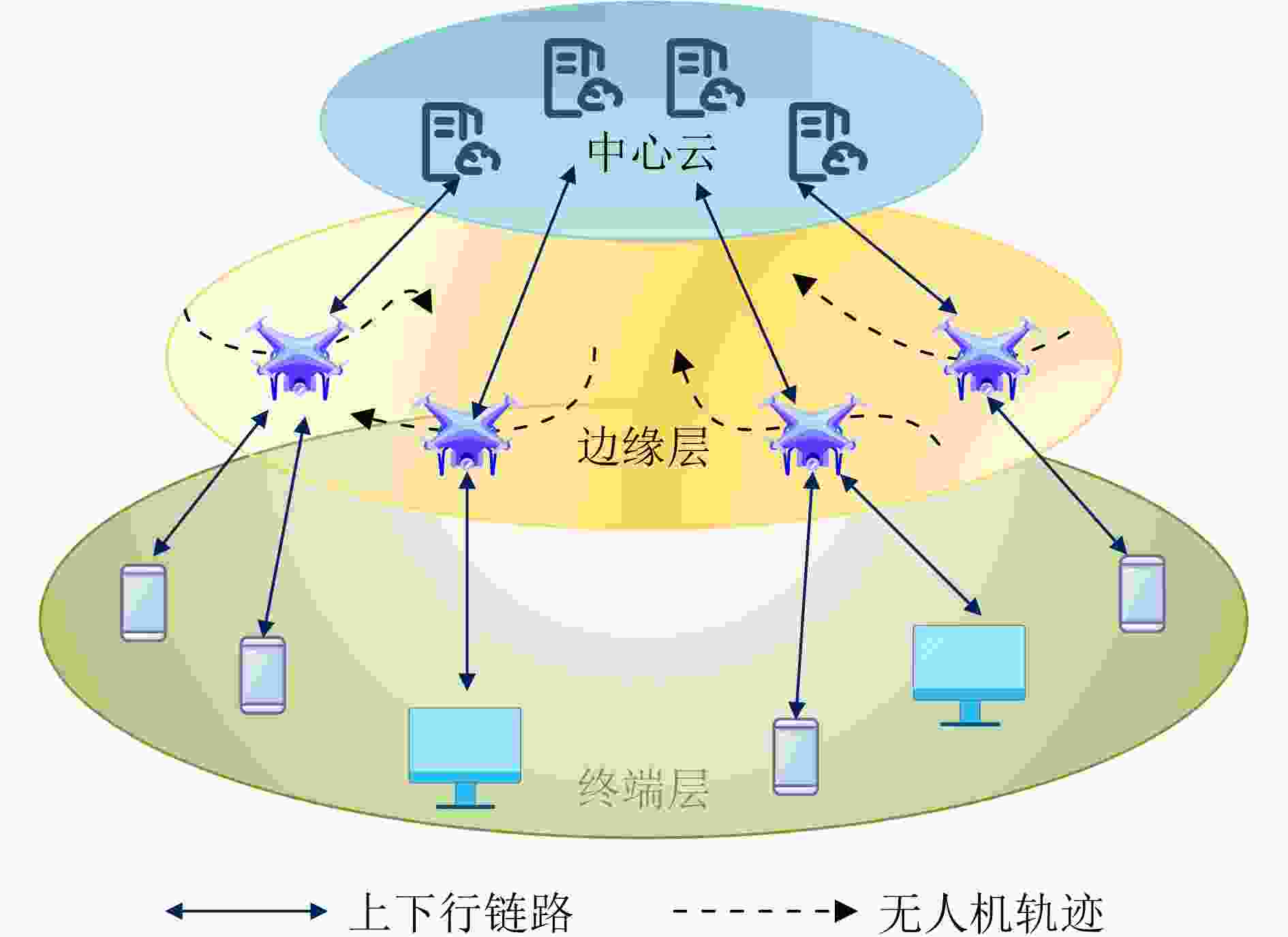


 下载:
下载:
